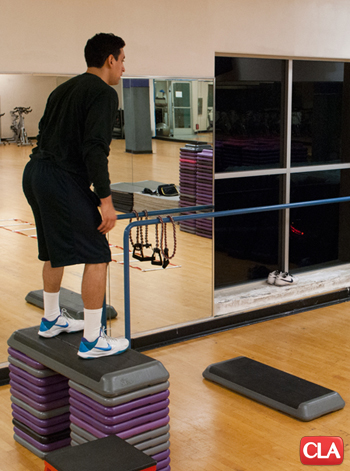An Introduction to Jump Training: Coach Sal's Sports Training Blog & Instructional Workout Videos
WELCOME to We Train Athletes, a division of the CollegeLevelAthletes.com Sports Network. I'm Coach Sal. I’m looking forward to this off season, the most important preparatory time in enhancing your game to help you get to the next level. I’ll be posting performance enhancement tips via blogs and exercise videos for you college level athletes! This week it’s all about plyometrics. Now let’s get settled, plyometrics isn’t just jumping as high as you can onto a box or straight up, so listen up. Watch the video and then check out the rest of my jump training tips and sport-specific workout advice.
Plyometrics Has a Specific Purpose.
RULE #1 in training; know WHY you are doing an exercise. Every exercise and or drill should have a specific purpose. Just don’t do to do. That is how college level athletes get injured. A crucial role in training is what I call "prevention training." Make sure you are able to do the exercise correctly with the proper progression. That point leads us back into plyometrics.
What is plyometrics? According to Dr. Yessis, one of the pioneers of jump training, it doesn't come as a surprise that Dr. Yuri Verkhoshansky, who created plyometrics and is considered to be the father of plyometrics, refused to accept recognition for being one of the pioneers. According to him, the plyometrics being practiced today is a far cry from what was created back in the 1960s- 70s in the former Soviet Union. He called his method the "shock method," or as I sometimes translated it, the "hit" or "impact method."
"This method consists of the body receiving a quick shock or impact, which then produces a powerful involuntary eccentric contraction. The great tension produced in this eccentric contraction is then given back in the return movement which consists of the concentric contraction.”
8 Tips to Consider in Your Training
Now what does that mean? It’s the ability to accumulate, withstand, and absorb the force in a quick matter of time, which in turn leads back into an explosive reaction (jump). Remember fellas, plyos work on your explosiveness to jump back up after landing. So don’t be concerned if you see someone else with a higher vertical because the college level athlete with the highest vertical doesn’t always get the rebound. It’s the athlete that is able to get off (explode) from the ground the quickest.
Leg strength!!! Make sure you have the leg strength to perform the exercises properly. Plyometrics are a high impact exercise so there will be a heavy amount of load displaced onto your legs. Overuse of plyos can lead to injury and we don’t want that. To get that strength perform exercises such as dead lifts, forward, backward, lateral lunges and calf raises.
1. Perfect your take-off and landing. It’s not about height when jumping onto the box. If you frog land onto the box, the box is too high. Your landing should be the same as your jump off. (see pictures for example)

2. As you step off and land with the depth jumps, do not get low. Step off and as you land, jump vertically up. Remember it’s ok if you can’t get up as high as you wish. We are focusing on the ability of your body to withstand the force and explode. And as your body adapts you will progress.
3. Perform plyos 2 times a week. Maybe 3 depending on your level. Once again this is a high impact exercise and overuse can lead to injury. Focus on leg strength rather than plyometrics. Perform 3 sets of 5 -12 depending on your level of advancement.
4. Incorporate jump training into the workouts. For instance calf jumps and hops. And make sure to hit all planes (frontal, transverse and sagittal).
5. Take your time to practice your balance. Practice single leg balance for a set period of time to strengthen your ankle stabilization.
6. Last but not least, take your time to warm up with dynamic stretches such as scorpions, leg swings, arm circles, bent over rotations, groiners, and lunges. Also take the time stretch at the end of every workout! Remember fellas it’s cool to go hard in your workouts but it’s vital to take your time to cool down and stretch as it will help prevent injuries and soreness.
7. Have fun with it!
There you go college level athletes. Check out the video and pictures for more details. I’m excited and looking forward to the off season. If you have any questions don’t hesitate to hit me up via Twitter, Facebook, or email. Emmitt Smith once said all men are created equal some just work harder in preseason! Off-season is your preseason. With that said I’m out. Remember train with a purpose and CONSISTENT practice makes perfect!
Coach Sal.
